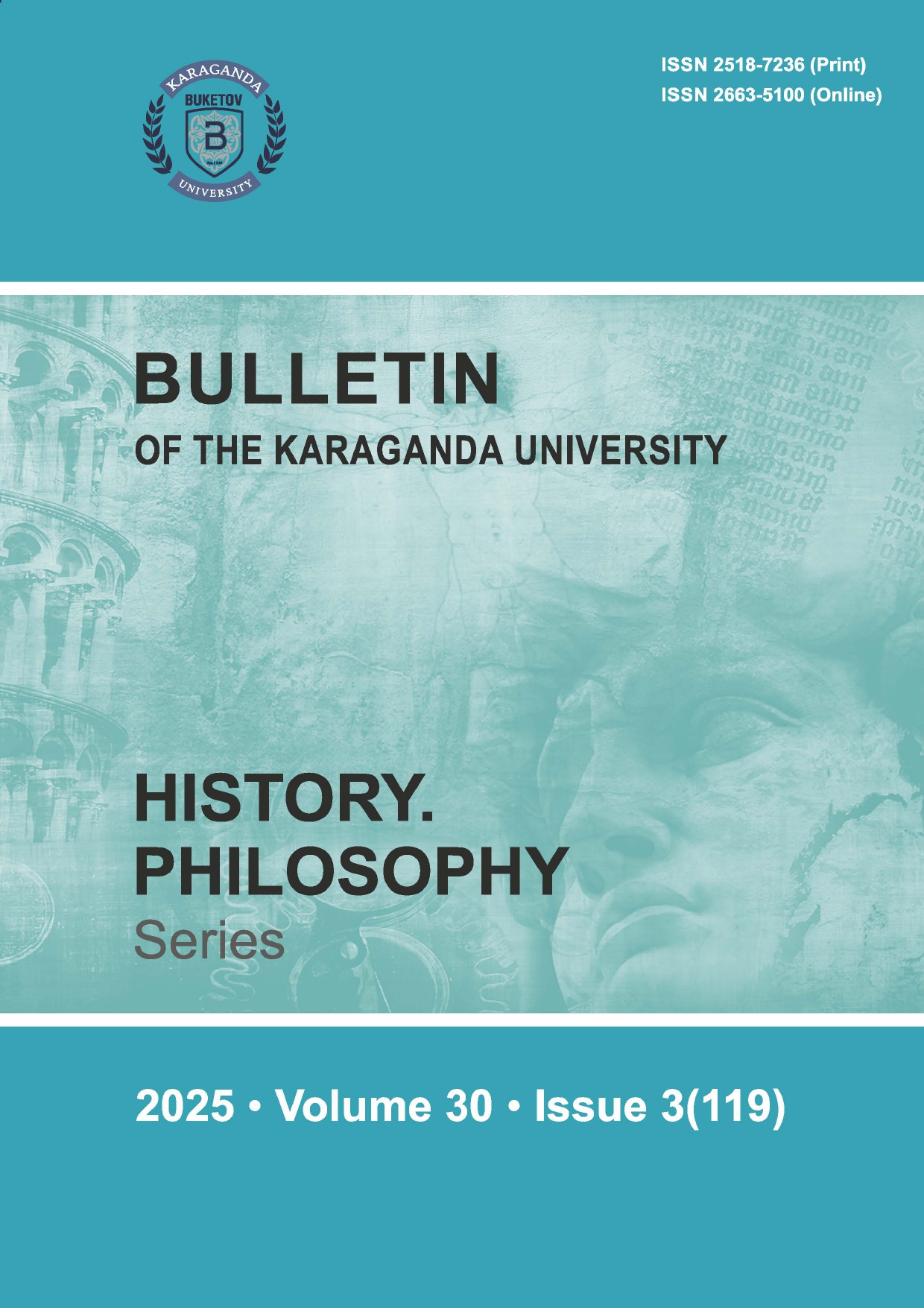Features of the Collectivization and Confiscation Campaign in the Districts of the Syr Darya Region
DOI:
https://doi.org/10.31489/2025hph3/7-15Keywords:
collectivization, confiscation of property, Syr Darya district, famine, agriculture, collectivization policy, history of KazakhstanAbstract
The Syr Darya District, which existed from 1928 to 1930 as part of the Kazakh ASSR, was an agrarian district specializing in agriculture. During this period, the district was formed from parts of the Akmola, Semipalatinsk, and Syr Darya provinces, with its center in the city of Shymkent. The main economic activities in the district were agriculture and livestock breeding, which is confirmed by the presence of numerous areas focused on agricultural production. Thus, the Syrdarya District played an important role in the transformations of the late 1920s and 1930s, with the region serving as a model for the country's agricultural production. The Syrdarya District, like the rest of Kazakhstan, was subject to collectivization. Collectivization in the Syr Darya District, as in other parts of Kazakhstan, took place under conditions of severe coercion and was accompanied by the violent seizure of livestock and land from the population, which led to mass starvation and death. The article examines the process of developing a policy of continuous collectivization at the level of central and regional party and state bodies, as well as the specifics of collectivization in the Syr Darya district. Based on archival documents, the authors of this article show the specifics of collectivization in this district, examine a set of measures for confiscation, and describe forms of resistance by the peasantry.




